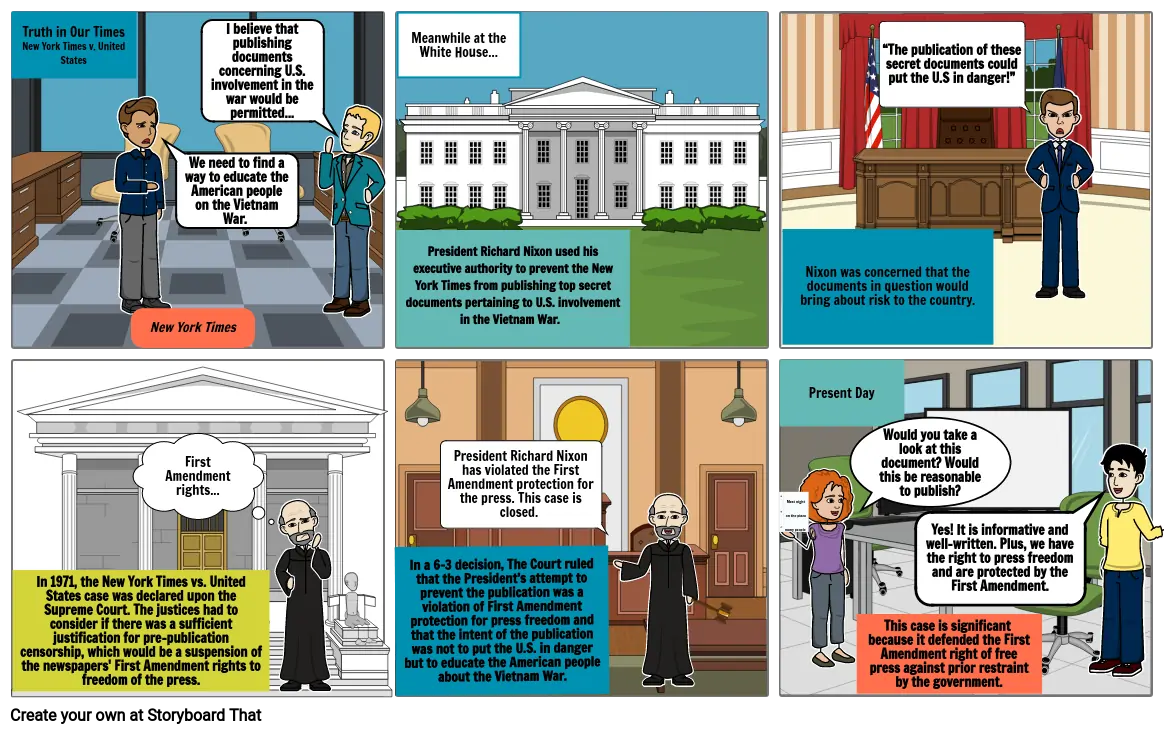New York Times v. United States

Storyboard Text
- Truth in Our TimesNew York Times v. United States
- New York Times
- We need to find a way to educate the American people on the Vietnam War.
- I believe that publishing documents concerning U.S. involvement in the war would be permitted...
- President Richard Nixon used his executive authority to prevent the New York Times from publishing top secret documents pertaining to U.S. involvement in the Vietnam War.
- Meanwhile at the White House...
- Nixon was concerned that the documents in question would bring about risk to the country.
- “The publication of these secret documents could put the U.S in danger!”
- In 1971, the New York Times vs. United States case was declared upon the Supreme Court. The justices had to consider if there was a sufficient justification for pre-publication censorship, which would be a suspension of the newspapers' First Amendment rights to freedom of the press.
- First Amendment rights...
- In a 6-3 decision, The Court ruled that the President’s attempt to prevent the publication was a violation of First Amendment protection for press freedom and that the intent of the publication was not to put the U.S. in danger but to educate the American people about the Vietnam War.
- President Richard Nixon has violated the First Amendment protection for the press. This case is closed.
- Mast night on the plaza many people
- Present Day
- Would you take a look at this document? Would this be reasonable to publish?
- This case is significant because it defended the First Amendment right of free press against prior restraint by the government.
- Yes! It is informative and well-written. Plus, we have the right to press freedom and are protected by the First Amendment.
Over 30 Million Storyboards Created
No Downloads, No Credit Card, and No Login Needed to Try!
